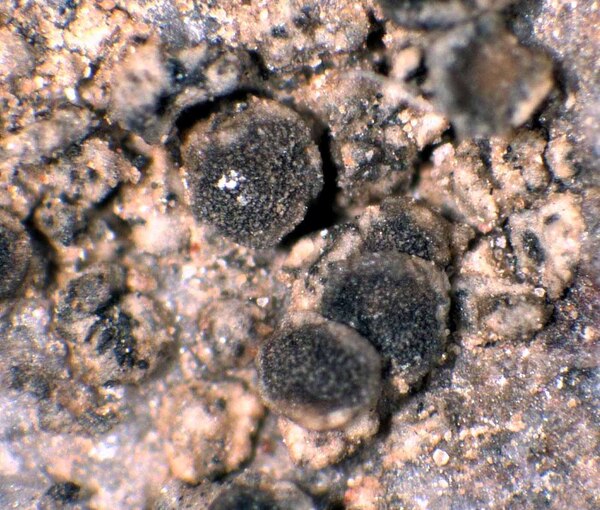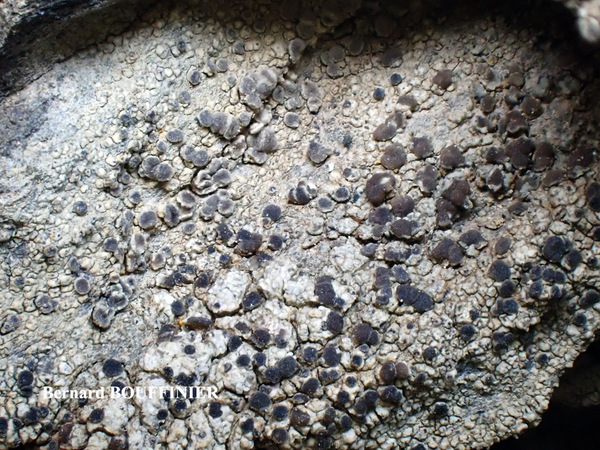Lecania atrynoides M. Knowles
Sc. Proc. Roy. Dublin Soc., 14: 130, 1913.
Synonyms: Lecania macrocarpa B. de Lesd.
Distribution: N - Piem, Lig. C - Tosc (Ravera & al. 2020), Sar.
Description: Thallus crustose, episubstratic, up to 0.8 mm thick, smooth, rimose-areolate or verrucose-areolate, often discontinuous, whitish-grey to pale brown, the areoles 0.5-2 mm wide. Apothecia lecanorine, 0.3-0.7(-1) mm across, rounded to irregular in outline by mutual compression, with a dark brown to black (translucent and brown-speckled when wet), flat to slightly convex, epruinose disc, a smooth, finally excluded thalline margin, and often a thin parathecial ring. Thalline exciple ecorticate or with a thin, poorly developed cortex, the medulla with sparse algal cells; proper exciple thin, poorly developed, of dark-pigmented hyphae; epithecium brown or patchily greenish brown to black, with an epipsamma, N-; hymenium colourless, (60-)70-90 µm high; paraphyses c. 1.5 µm thick, gradually widening to 3-5 µm at apex, difficult to separate due to the abundant hymenial gel; hypothecium colourless or very pale brown. Asci 8-spored, clavate, with a K/I+ blue apical dome penetrated by a narrow, K/I- apical cushion surrounded by a narrow, deeply K/I+ blue zone, the wall K/I- but surrounded by an I+ red-brown, K/I+ blue outer layer, the ocular chamber relatively small, Biatora-type. Ascospores (0-)1(-2)-septate, hyaline, narrowly ellipsoid, (9-)10-13(-16) x 4-5(-6) µm, without a gelatinous perispore. Pycnidia immersed, reddish-brown around the ostiole. Conidia filiform, curved. Photobiont chlorococcoid. Spot tests: K-, C-, KC-, P-, UV-. Chemistry: without lichen substances.
Note: a Mediterranean-Atlantic species of siliceous rocks, including basalt, often starting the life-cycle on species of crustose Teloschistaceae; most frequent in Tyrrhenian Italy. The species seems to be mostly coastal in NW Europe; the record from the Alps of Piedmont is dubious.
Growth form: Crustose
Substrata: rocks
Photobiont: green algae other than Trentepohlia
Reproductive strategy: mainly sexual
Most common in areas with a humid-warm climate (e.g. most of Tyrrenian Italy)
paras Caloplaca s.lat. spp.
Taxon bound to maritime-coastal situations
Commonnes-rarity: (info)
Alpine belt: absent
Subalpine belt: absent
Oromediterranean belt: absent
Montane belt: absent
Submediterranean belt: extremely rare
Padanian area: absent
Humid submediterranean belt: extremely rare
Humid mediterranean belt: very rare
Dry mediterranean belt: absent
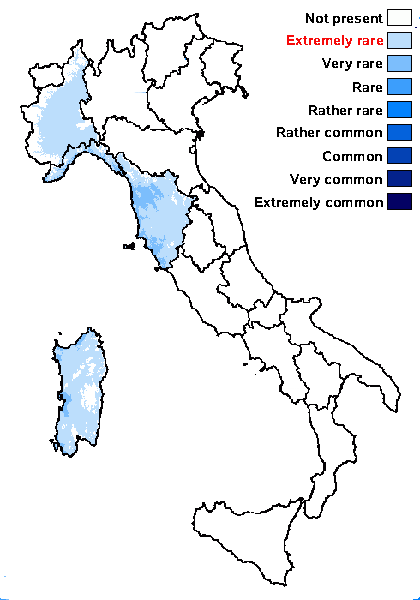
Predictive model
Herbarium samples
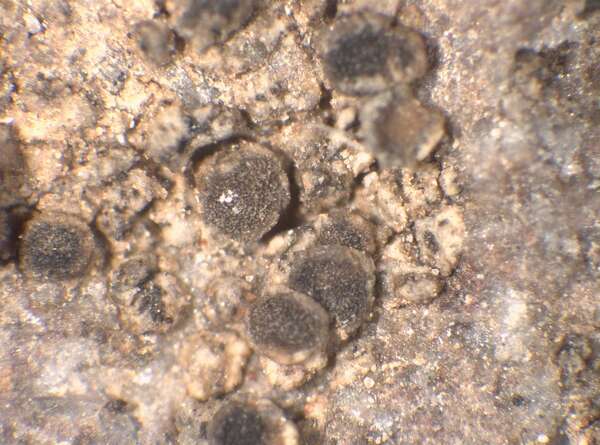

P.L. Nimis; Owner: Department of Life Sciences, University of Trieste
Herbarium: TSB (13060)
2003/03/12
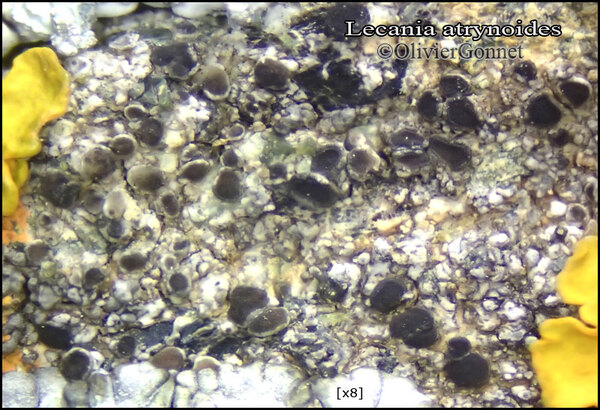
Courtesy Danièle et Olivier Gonnet - Source: https://www.afl-lichenologie.fr/Photos_AFL/Photos_AFL_L/Texte_L_3/Lecania_atrynoides.htm
France, Punta di Ventilegne - Corse
12/10/2015
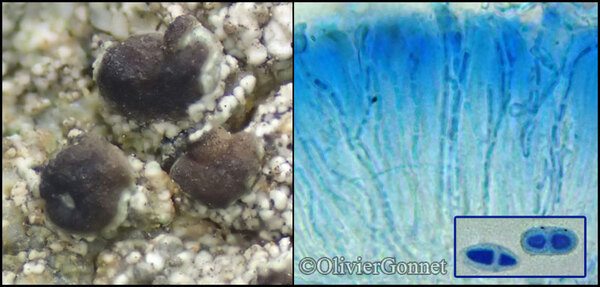
Courtesy Danièle et Olivier Gonnet - Source: https://www.afl-lichenologie.fr/Photos_AFL/Photos_AFL_L/Texte_L_3/Lecania_atrynoides.htm
France, Punta di Ventilegne - Corse
12/10/2015
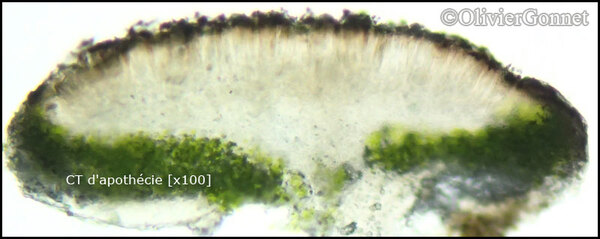
Courtesy Danièle et Olivier Gonnet - Source: https://www.afl-lichenologie.fr/Photos_AFL/Photos_AFL_L/Texte_L_3/Lecania_atrynoides.htm
France, Punta di Ventilegne - Corse
12/10/2015

Courtesy Danièle et Olivier Gonnet - Source: https://www.afl-lichenologie.fr/Photos_AFL/Photos_AFL_L/Texte_L_3/Lecania_atrynoides.htm
France, Punta di Ventilegne - Corse
12/10/2015

Bernard Bouffinier - Source: http://www.lichensmaritimes.org/index.php?task=fiche&lichen=39&lang=en
France, Lomergat
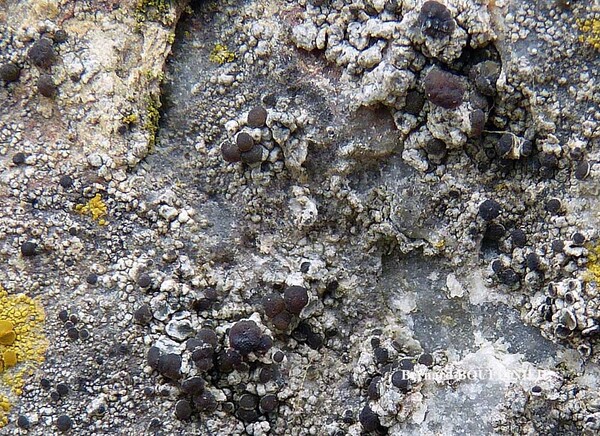
Bernard Bouffinier - Source: http://www.lichensmaritimes.org/index.php?task=fiche&lichen=39&lang=en
France, Crozon
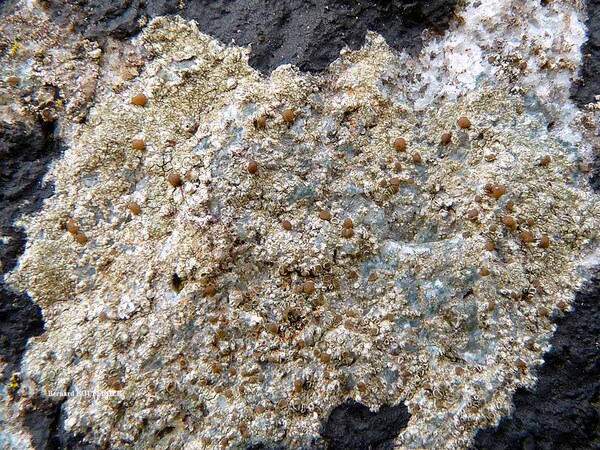
Bernard Bouffinier - Source: http://www.lichensmaritimes.org/index.php?task=fiche&lichen=39&lang=en
France, Le Passage
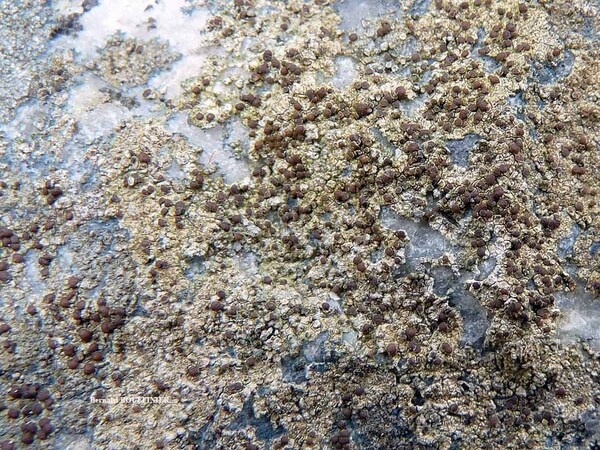
Bernard Bouffinier - Source: http://www.lichensmaritimes.org/index.php?task=fiche&lichen=39&lang=en
France, Le Passage
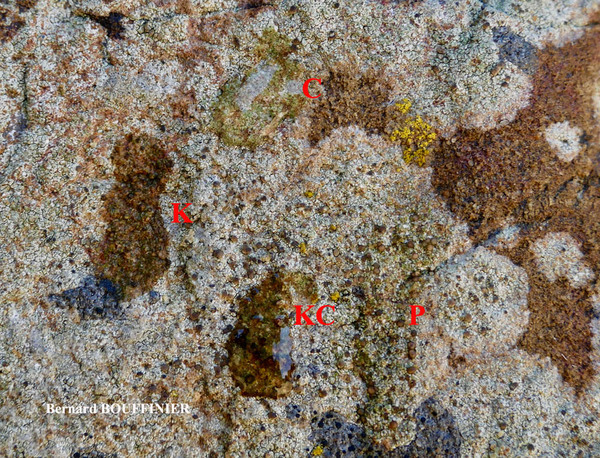
Bernard Bouffinier - Source: http://www.lichensmaritimes.org/index.php?task=fiche&lichen=39&lang=en
France, Lomergat
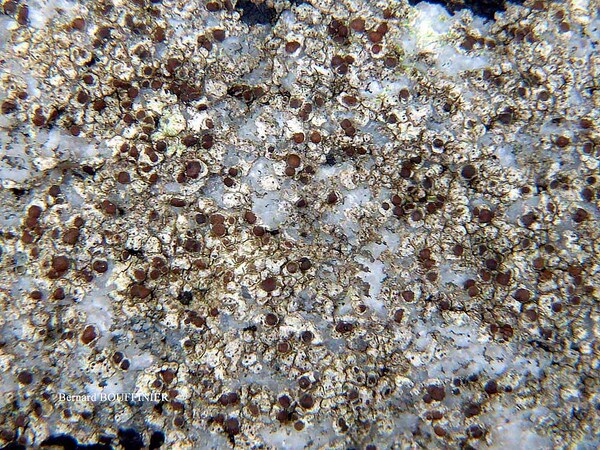
Bernard Bouffinier - Source: http://www.lichensmaritimes.org/index.php?task=fiche&lichen=39&lang=en
France, Cap de la Chèvre
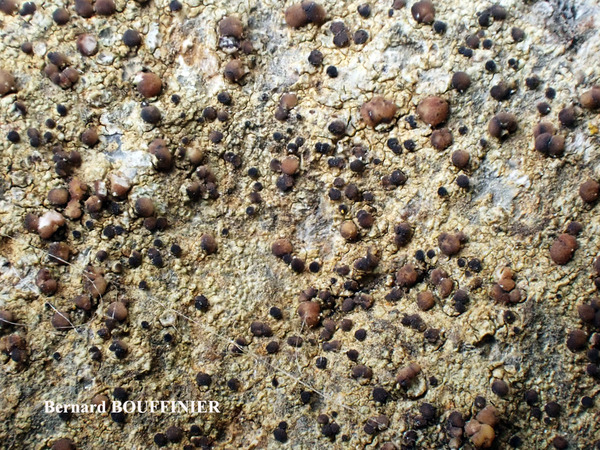
Bernard Bouffinier - Source: http://www.lichensmaritimes.org/index.php?task=fiche&lichen=39&lang=en
France, Le Fret

Bernard Bouffinier - Source: http://www.lichensmaritimes.org/index.php?task=fiche&lichen=39&lang=en
France, Le Fret
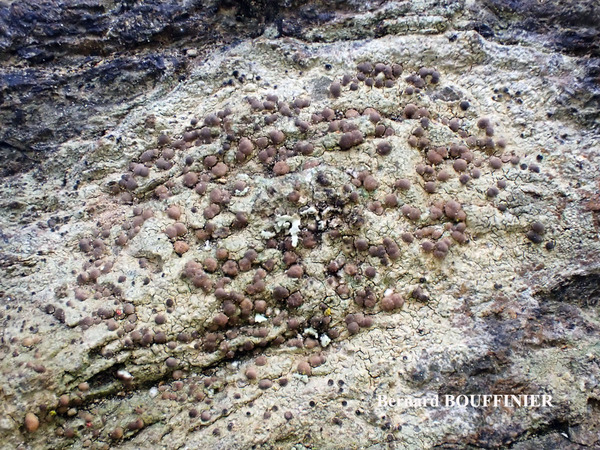
Bernard Bouffinier - Source: http://www.lichensmaritimes.org/index.php?task=fiche&lichen=39&lang=en
France, Le Fret
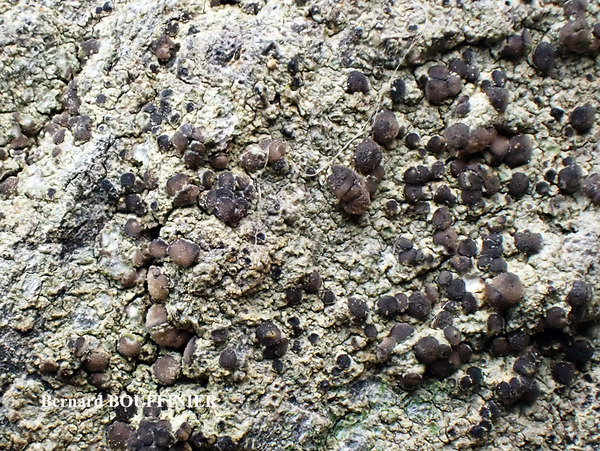
Bernard Bouffinier - Source: http://www.lichensmaritimes.org/index.php?task=fiche&lichen=39&lang=en
France, Le Fret
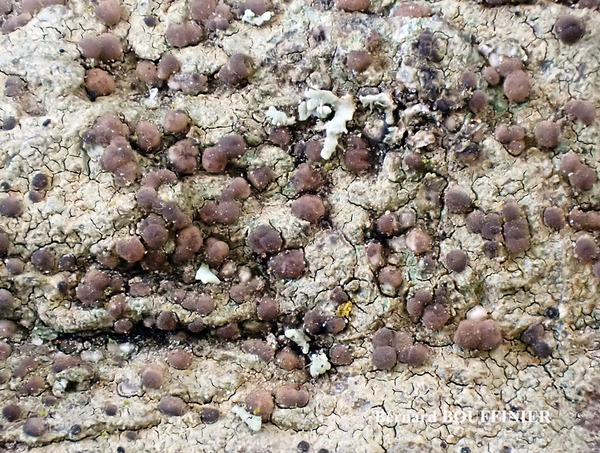
Bernard Bouffinier - Source: http://www.lichensmaritimes.org/index.php?task=fiche&lichen=39&lang=en
France, Le Fret
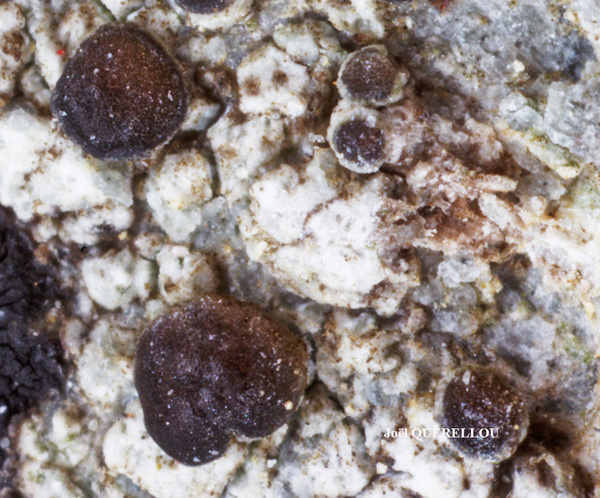
Joël Querellou - Source: http://www.lichensmaritimes.org/index.php?task=fiche&lichen=39&lang=en
France, Plomodiern

Joël Querellou - Source: http://www.lichensmaritimes.org/index.php?task=fiche&lichen=39&lang=en
France, Plomodiern
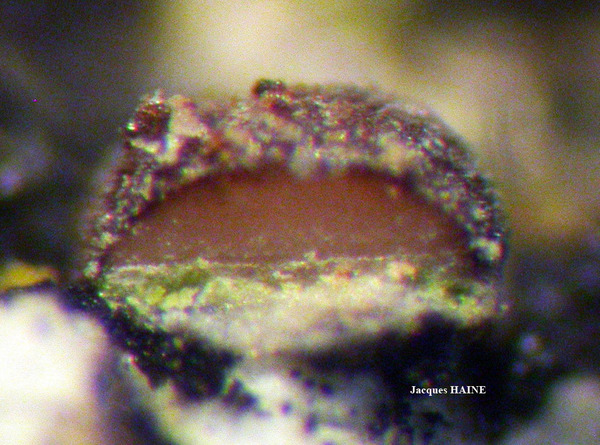
Jacques Haine - Source: http://www.lichensmaritimes.org/index.php?task=fiche&lichen=39&lang=en
France, Landevennec
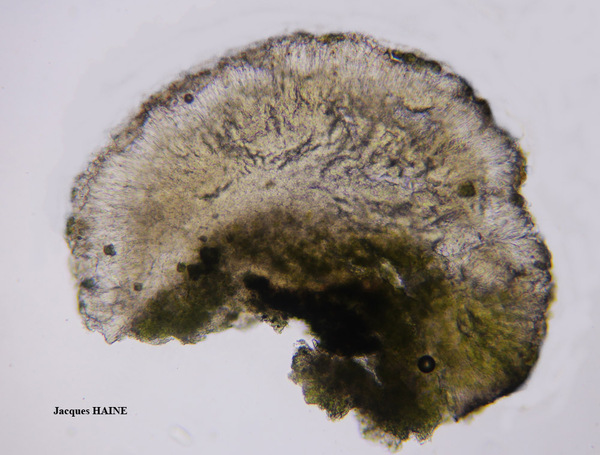
Jacques Haine - Source: http://www.lichensmaritimes.org/index.php?task=fiche&lichen=39&lang=en
France, Landevennec
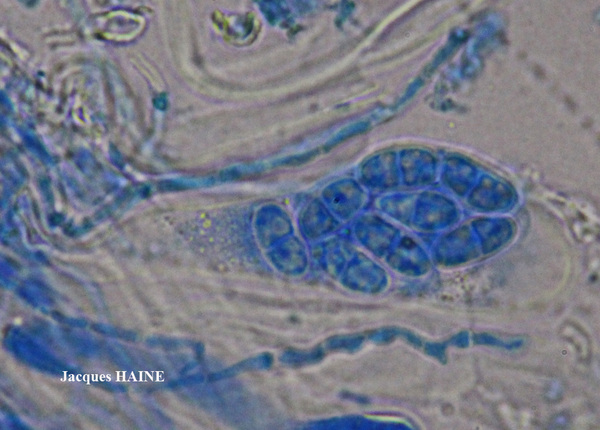
Jacques Haine - Source: http://www.lichensmaritimes.org/index.php?task=fiche&lichen=39&lang=en
France, Landevennec
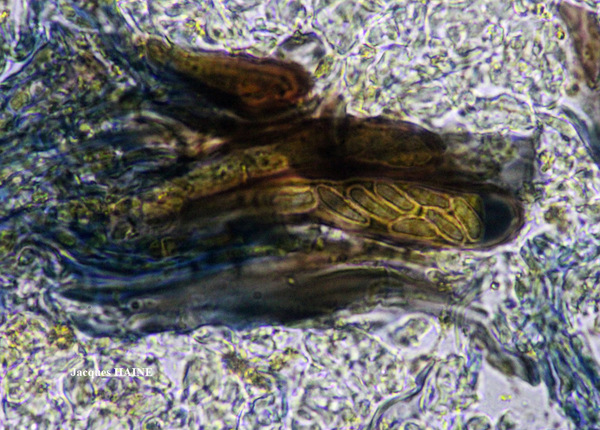
Jacques Haine - Source: http://www.lichensmaritimes.org/index.php?task=fiche&lichen=39&lang=en
France, Landevennec

Jacques Haine - Source: http://www.lichensmaritimes.org/index.php?task=fiche&lichen=39&lang=en
France, Landevennec

Jacques Haine - Source: http://www.lichensmaritimes.org/index.php?task=fiche&lichen=39&lang=en
France, Landevennec

Bernard Bouffinier - Source: http://www.lichensmaritimes.org/index.php?task=fiche&lichen=1282&lang=en
France, Roscanvel
forme maritime des roches calcaires
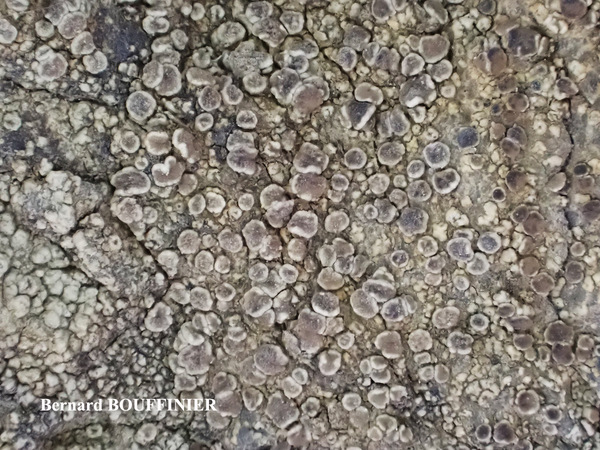
Bernard Bouffinier - Source: http://www.lichensmaritimes.org/index.php?task=fiche&lichen=1282&lang=en
France, Roscanvel
forme maritime des roches calcaires
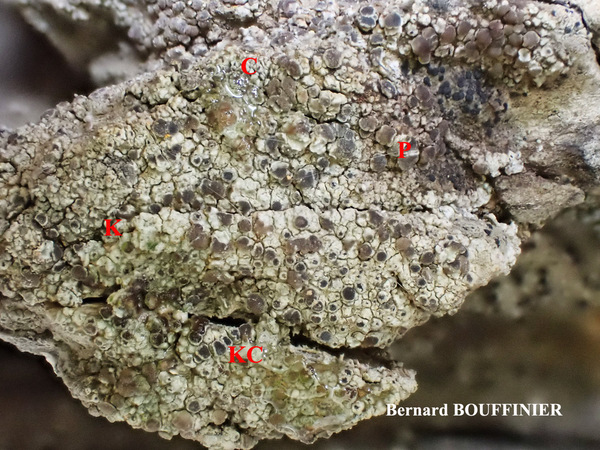
Bernard Bouffinier - Source: http://www.lichensmaritimes.org/index.php?task=fiche&lichen=1282&lang=en
France, Roscanvel
forme maritime des roches calcaires
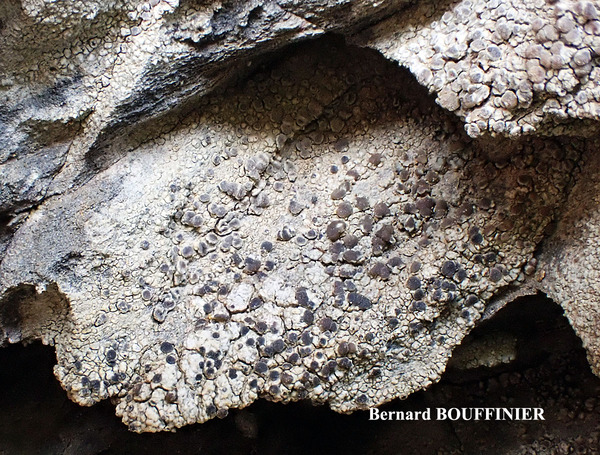
Bernard Bouffinier - Source: http://www.lichensmaritimes.org/index.php?task=fiche&lichen=1282&lang=en
France, Roscanvel
forme maritime des roches calcaires
Growth form: Crustose
Substrata: rocks
Photobiont: green algae other than Trentepohlia
Reproductive strategy: mainly sexual
Most common in areas with a humid-warm climate (e.g. most of Tyrrenian Italy)
paras Caloplaca s.lat. spp.
Taxon bound to maritime-coastal situations
Commonnes-rarity: (info)
Alpine belt: absent
Subalpine belt: absent
Oromediterranean belt: absent
Montane belt: absent
Submediterranean belt: extremely rare
Padanian area: absent
Humid submediterranean belt: extremely rare
Humid mediterranean belt: very rare
Dry mediterranean belt: absent

Predictive model
| Herbarium samples |


P.L. Nimis; Owner: Department of Life Sciences, University of Trieste
Herbarium: TSB (13060)
2003/03/12

Courtesy Danièle et Olivier Gonnet - Source: https://www.afl-lichenologie.fr/Photos_AFL/Photos_AFL_L/Texte_L_3/Lecania_atrynoides.htm
France, Punta di Ventilegne - Corse
12/10/2015

Courtesy Danièle et Olivier Gonnet - Source: https://www.afl-lichenologie.fr/Photos_AFL/Photos_AFL_L/Texte_L_3/Lecania_atrynoides.htm
France, Punta di Ventilegne - Corse
12/10/2015

Courtesy Danièle et Olivier Gonnet - Source: https://www.afl-lichenologie.fr/Photos_AFL/Photos_AFL_L/Texte_L_3/Lecania_atrynoides.htm
France, Punta di Ventilegne - Corse
12/10/2015

Courtesy Danièle et Olivier Gonnet - Source: https://www.afl-lichenologie.fr/Photos_AFL/Photos_AFL_L/Texte_L_3/Lecania_atrynoides.htm
France, Punta di Ventilegne - Corse
12/10/2015

Bernard Bouffinier - Source: http://www.lichensmaritimes.org/index.php?task=fiche&lichen=39&lang=en
France, Lomergat

Bernard Bouffinier - Source: http://www.lichensmaritimes.org/index.php?task=fiche&lichen=39&lang=en
France, Crozon

Bernard Bouffinier - Source: http://www.lichensmaritimes.org/index.php?task=fiche&lichen=39&lang=en
France, Le Passage

Bernard Bouffinier - Source: http://www.lichensmaritimes.org/index.php?task=fiche&lichen=39&lang=en
France, Le Passage

Bernard Bouffinier - Source: http://www.lichensmaritimes.org/index.php?task=fiche&lichen=39&lang=en
France, Lomergat

Bernard Bouffinier - Source: http://www.lichensmaritimes.org/index.php?task=fiche&lichen=39&lang=en
France, Cap de la Chèvre

Bernard Bouffinier - Source: http://www.lichensmaritimes.org/index.php?task=fiche&lichen=39&lang=en
France, Le Fret

Bernard Bouffinier - Source: http://www.lichensmaritimes.org/index.php?task=fiche&lichen=39&lang=en
France, Le Fret

Bernard Bouffinier - Source: http://www.lichensmaritimes.org/index.php?task=fiche&lichen=39&lang=en
France, Le Fret

Bernard Bouffinier - Source: http://www.lichensmaritimes.org/index.php?task=fiche&lichen=39&lang=en
France, Le Fret

Bernard Bouffinier - Source: http://www.lichensmaritimes.org/index.php?task=fiche&lichen=39&lang=en
France, Le Fret

Joël Querellou - Source: http://www.lichensmaritimes.org/index.php?task=fiche&lichen=39&lang=en
France, Plomodiern

Joël Querellou - Source: http://www.lichensmaritimes.org/index.php?task=fiche&lichen=39&lang=en
France, Plomodiern

Jacques Haine - Source: http://www.lichensmaritimes.org/index.php?task=fiche&lichen=39&lang=en
France, Landevennec

Jacques Haine - Source: http://www.lichensmaritimes.org/index.php?task=fiche&lichen=39&lang=en
France, Landevennec

Jacques Haine - Source: http://www.lichensmaritimes.org/index.php?task=fiche&lichen=39&lang=en
France, Landevennec

Jacques Haine - Source: http://www.lichensmaritimes.org/index.php?task=fiche&lichen=39&lang=en
France, Landevennec

Jacques Haine - Source: http://www.lichensmaritimes.org/index.php?task=fiche&lichen=39&lang=en
France, Landevennec

Jacques Haine - Source: http://www.lichensmaritimes.org/index.php?task=fiche&lichen=39&lang=en
France, Landevennec

Bernard Bouffinier - Source: http://www.lichensmaritimes.org/index.php?task=fiche&lichen=1282&lang=en
France, Roscanvel
forme maritime des roches calcaires

Bernard Bouffinier - Source: http://www.lichensmaritimes.org/index.php?task=fiche&lichen=1282&lang=en
France, Roscanvel
forme maritime des roches calcaires

Bernard Bouffinier - Source: http://www.lichensmaritimes.org/index.php?task=fiche&lichen=1282&lang=en
France, Roscanvel
forme maritime des roches calcaires

